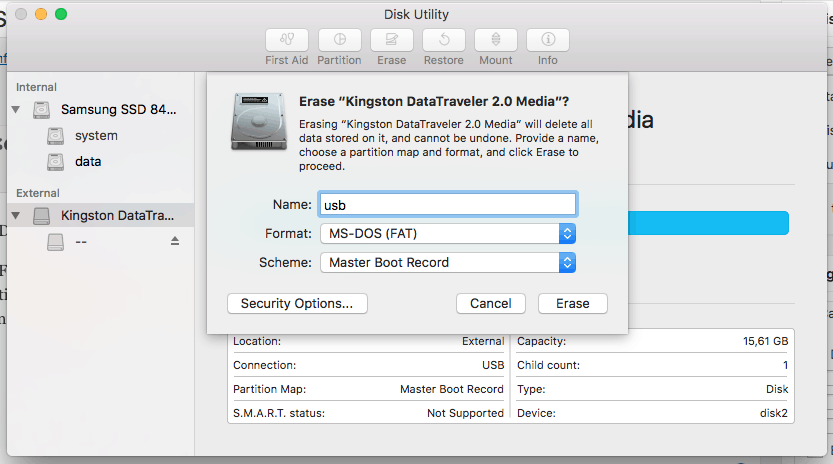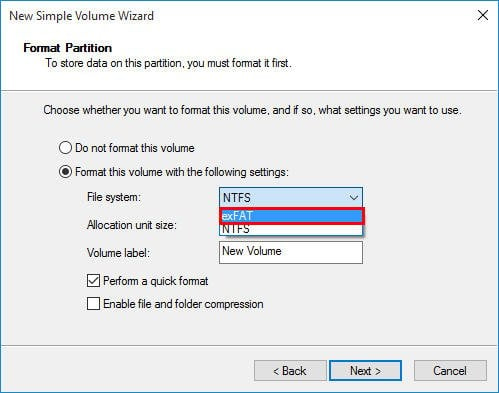
If you’ve recently upgraded the hard drive in your PS4 and want to use it on your computer – you’ll find that the drive doesn’t appear in Windows Explorer.
Part 1: Two methods to format external hard drive on Mac Method I: Format an external hard drive through 'Disk Utility' (newbie friendly) Step 1: Connect the external hard drive with your Mac, and the computer will mount your external hard drive. Click here when external hard drive does't mount on Mac.
This is because the PS4 uses a format not recognised by Windows.
- Nov 04, 2016 You just need to know how to format external hard drive for PS4. Simply put, your PS4 isn’t recognizing the file system of your drive, which is most probably NTFS. Now NTFS works fine with computers and is the standard file system, but for some reasons, developers decided that the PS4 won’t support this file system.
- Format Hard Drive (Mac) 1. Connect the external hard drive to the computer. Click Go on the top tool bar, and select Utilities. Open Disk Utility. Select the external hard drive on the left-hand side. Click the Partition tab. Change the Partition Layout from Current to 1 Partition.
- You just need to know how to format external hard drive for PS4. Simply put, your PS4 isn’t recognizing the file system of your drive, which is most probably NTFS. Now NTFS works fine with computers and is the standard file system, but for some reasons, developers decided that the PS4 won’t support this file system.
To make it work in Windows you’ll need to remove the existing partitions and create a new partition that is recognised by Windows.
These steps will show how using Windows 10, but will be similar for Windows 7 and 8. This process DOES NOT require you to install third-party software, a potential source of malware.
- Connect the PS4 hard drive to the computer (e.g. using a USB caddy or internal SATA cable)
- Right-click on the Windows start button and choose ‘Disk Management’
- All the drives connected to the computer will be listed in the lower half of the Disk Management window.
- It’s critically important that you select the right disk – if you do this to another disk you will loose data.
- You can use the size to tell if you have the right drive, as well as it having many partitions (15+)
- The first thing to do is to delete all the existing partitions – this is done by right-clicking on each of the blocks and choosing ‘Delete Volume’
- When prompted, click ‘Yes’ to confirm
- Repeat the process for all partitions until you see one large ‘Unallocated’ block
- Now right-click on the unallocated block and choose ‘New Simple Volume’
- The New Simple Volume Wizard will open. Keep clicking next to progress through, you can also choose a name for the drive under the ‘Volume label’.
- When the wizard is finished you will now have a new drive available in Windows Explorer for the old PS4 hard drive.
- You can now close the Disk Management window.
Wanting to use it as a portable USB drive? Check out how to convert the drive to FAT32 for PS4 compatibility here: Format USB drives beyond FAT32 32GB limit – for PS4 and MAC OS
'Format', a word which is connected with 'all data clear' and which is different from what it is called so on Windows, has another name on Mac, 'erase'. Of course, there are different occasions where people want to get their external hard drives erased.
When there are bad sectors which don't store the data of bootstrap procedure, but of some important private files, people expect for formatting and backing up to make these files accessible again; when people's hard disks can no longer write in further, they expect for erasing disk to pave way for new items to write; when there are file system errors in people's hard disks resulting from frequent hot swapping, they expect for formatting to give rebirth to these dying disks and make them in use again.

Then how to format a external hard drive on Mac? Here are two methods for those people who urgently need to erase a external hard drive.
Part 1: Two methods to format external hard drive on Mac
Method I: Format an external hard drive through 'Disk Utility' (newbie friendly)
Step 1: Connect the external hard drive with your Mac, and the computer will mount your external hard drive. Click here when external hard drive does't mount on Mac.
Step 2: Launchpad → Other → Disk Utility, and click the Disk Utility.
Step 3: Choose your target external hard drive or volume, click Erase on the top. If you find there's something wrong to read your external hard drive, then you can turn to external hard drive does't show up in Disk Utility for help.

Step 4: Edit the disk name, select a format and a scheme.
There are 10 formats (file systems) you can select in macOS 10.13 or above:
And 3 kinds of Scheme you can choose:
• GUID Partition Map: for all Intel-based Mac computers.
• Master Boot Record: for Windows partitions that will be formatted as MS-DOS (FAT) or ExFAT.
• Apple Partition Map: for compatibility with old PowerPC-based Mac computers.
Step 4: Click Erase to format your target disk.
What External Hard Drive Works With Ps4
Note: As for our example to erase a whole external hard drive, the original physical volume 'X' and 'Y' will have been deleted and a new volume 'Untitled' will have been established. At that time, there will be an icon of your new-established volume on the desktop.
Step 5: Click Done, and congratulations that you have finished all the steps.
Steps to format a volume are 99% the same as that of a external hard drive.
The most distinguishing difference of formatting between a volume and a external hard drive is that: if a external hard drive gets formatted, then all the volumes inside the external hard drive, which means all the data, will be deleted. Compared with that, if a volume gets formatted, only the one that gets formatted will be deleted, and that's to say, only the data of the formatted volume will be deleted.

Method II: Format an external hard drive through 'Terminal'
Step 1: Launchpad → Other → Terminal, and click Terminal.
Step 2: Input 'diskutil list', press Enter to list out all your disks.
Step 3: Input the 'erase' command: diskutil erasedisk + new file system + new disk name + identifier.
For example: to format the whole disk 2 to hfs+, then the operating command is:
To format a single volume to hfs+, like disk2s1, then the operating command is:
Note:
1. There's no limitation of uppercase or lower case.
2. HFS+ can be replaced by other file system formats, and here provide some references like APFS, JHFS+, FAT32 and ExFAT.
3. 'TD' is the name that I give to the new disk and it can be replaced by any word you like.
4. 'disk 2' is the IDENTIFIER, or rather, the target disk that I want to format.
Well done! Finished erasing on disk2! Now I believe you have master another method to format your external hard drive. Take a try!
Well, if you find that you can't format your disk due to the loss of some fatal meta files, you are bound to stop to recover your data and the iBoysoft Data Recovery can help you find the lost meta files.
Part 2: Understand external hard drive, container, volume and partition on Mac

If you newly switch from Windows PC to Mac, you may get confused with external hard drive, partition, container, and volume in Disk Utility. Here are the differences.
External hard drive: external hard drive is the hardware component like HDD and SSD that you used to store the data. In Mac Disk Utility, it shows in the first line of the whole disk directory (e.g. disk2).
Partition: different from Windows, the partition is more like an operation to divide the entire, large, uncultivated, lonely, and original disk space. When you partition your external hard drive, the partition map is created when the external hard drive is erased and the partition map defines how and what the partitions should be. But on Mac, a partition can't be in effect unless it has been activated, i.e. being formatted with a file system. A partition with a file system will be called a volume on Mac.
Container: Only the APFS has the Container where volumes share space with each other, which meanwhile implies that if one of the volumes is up to the entire partition capacity, there will be no space left for the other volumes to use in this partition. The Container is a special kind of partition on mac.
Volume: on Mac, any partition that is formatted with a file system before storing data is called a volume (e.g. disk2s1). Any available partition can divide its capacity into numerous volumes in a very easy-going way on mac while their names are editable. For an APFS external hard drive, APFS volume is a third-level unit of the storage device.
How To Format External Hard Drive For Ps4 On Mac Catalina
Ending
How To Format A Hard Drive (Windows 10, 8, 7, Vista, XP)
Thanks for reading! Follow us and we will show you more useful information about data recovery. Finally, nobody knows data recovery better than us!